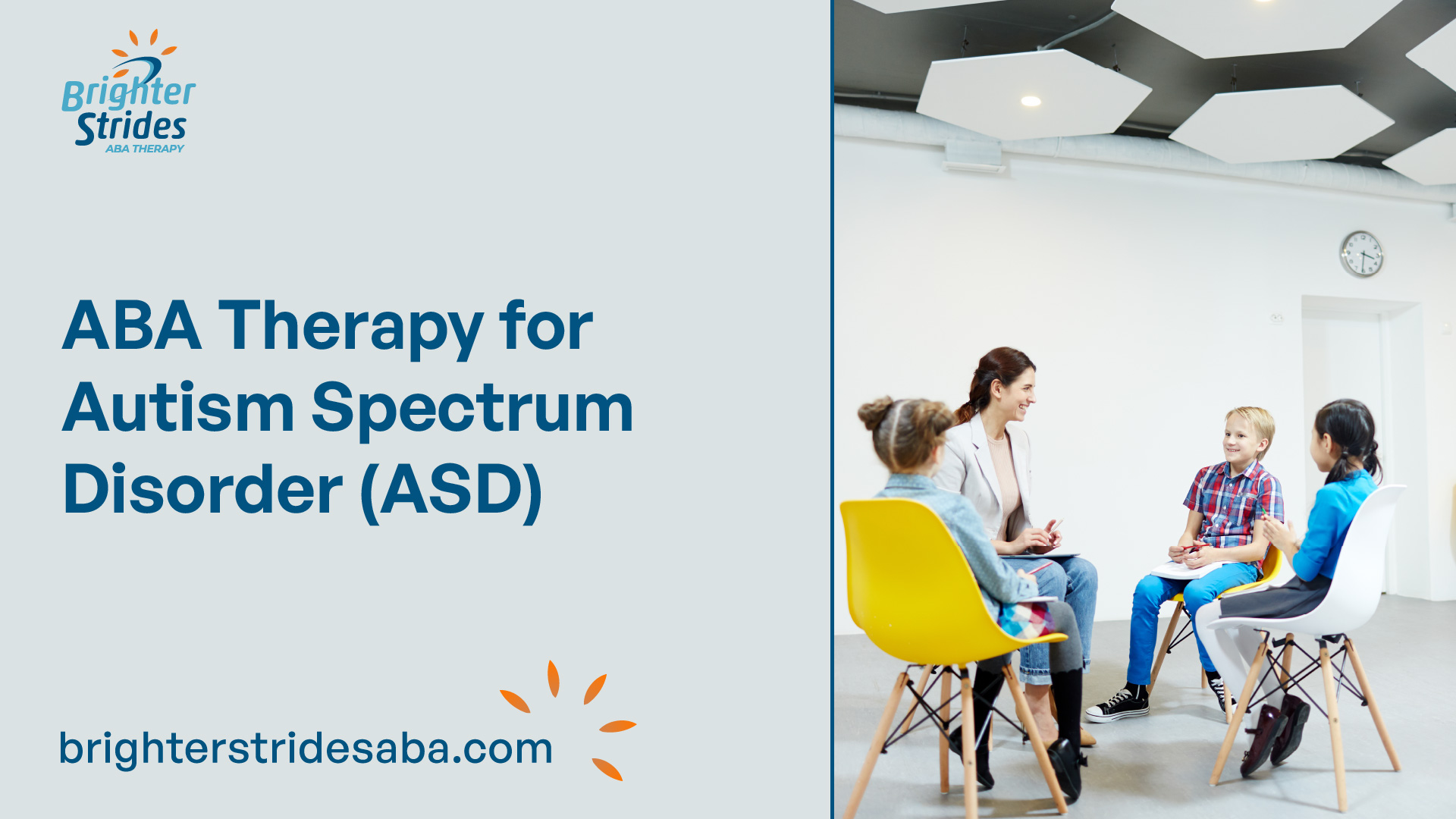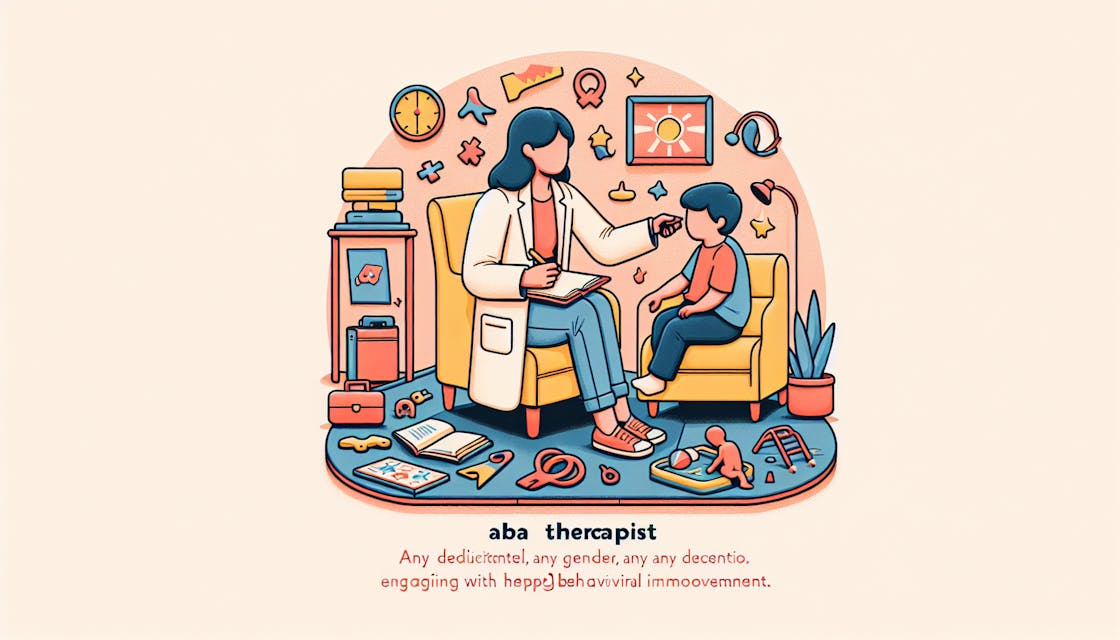Understanding ABA Therapy
ABA Therapy, short for Applied Behavior Analysis, is a scientific approach to understanding behavior and how it is affected by the environment. It is a method of therapy used to improve or change specific behaviors in individuals, particularly children diagnosed with Autism Spectrum Disorder (ASD). ABA therapy aims to help individuals develop skills that are important for daily living, such as communication, social, and adaptive skills.

What is ABA Therapy?
ABA therapy is a highly individualized form of therapy that is tailored to each person’s unique needs and situations. It creates structured opportunities for individuals to learn new skills and apply them in different situations for positive outcomes. By focusing on observable behaviors, ABA therapists work to increase desired behaviors and reduce behaviors that may be harmful or interfere with learning and development.
The Science behind ABA Therapy
ABA therapy is based on the principles of behaviorism and the work of psychologist B.F. Skinner. Skinner developed a theory of operant conditioning, which looks at how behavior can be controlled by altering the consequences of that behavior. Positive reinforcement is an important component of ABA therapy.
Positive reinforcement involves identifying an appropriate reward or reinforcement and providing it as soon as the desired behavior is performed. This helps to increase the likelihood of the behavior being repeated. ABA therapists use positive reinforcement to encourage desired behaviors in children, such as asking for a toy instead of grabbing it.
In addition to positive reinforcement, ABA therapy utilizes various techniques to facilitate behavior change. Two commonly used techniques are:
- Discrete Trial Training (DTT): DTT is a teaching strategy in which skills are broken down into small, distinct elements. The therapist introduces each element one at a time and provides positive reinforcement after each correct response. This structured approach helps individuals learn and master new skills.
- Antecedent-based Interventions (ABI): ABI focuses on modifying the environment to reduce the likelihood of triggering interfering behaviors. This can include creating an environment with few distractions to help the child focus on the intended antecedent. By modifying the antecedents, the therapist aims to promote positive behaviors and reduce problem behaviors.
By employing these evidence-based techniques, ABA therapists help individuals with ASD develop essential skills, improve their quality of life, and enhance their independence. The personalized nature of ABA therapy allows therapists to address the unique needs of each individual, ensuring the best possible outcomes.
The Role of an ABA Therapist
ABA therapists play a vital role in providing effective therapy to individuals with behavior disorders and developmental disabilities. Their responsibilities encompass a range of tasks that contribute to the overall progress and well-being of their clients. ABA therapists also undergo specific qualifications and training to ensure they are equipped with the necessary knowledge and skills for their role.

Responsibilities of an ABA Therapist
The responsibilities of an ABA therapist are multifaceted, involving various aspects of assessment, intervention, and monitoring. The goal is to help individuals develop essential skills, reduce challenging behaviors, and improve their overall quality of life. Some key responsibilities include:
- Assessment: ABA therapists assess the individual’s needs and develop comprehensive treatment plans tailored to their specific requirements. This involves evaluating their strengths, weaknesses, and areas for improvement to create a roadmap for intervention.
- Implementing Interventions: ABA therapists implement evidence-based interventions based on the treatment plan. These interventions may include teaching new skills, modifying behaviors, and promoting independence in various areas such as social interactions, communication, and daily living skills.
- Monitoring Progress: ABA therapists closely monitor the progress of their clients over time. They collect and analyze data to evaluate the effectiveness of the interventions and make adjustments as needed. Data analysis allows for quantitative measurement of progress, ensuring that the therapy is on track and yielding positive outcomes.
- Collaboration and Communication: A significant aspect of the role of an ABA therapist involves collaborating with families, caregivers, and other professionals involved in the client’s care. They provide guidance, support, and training to ensure that skills learned during therapy generalize to different environments, promoting overall improvement in the client’s quality of life.
- Creating and Maintaining a Positive Environment: ABA therapists create a safe and supportive environment for their clients. They use positive reinforcement strategies to motivate and encourage desired behaviors, fostering a positive learning experience.
Qualifications and Training for ABA Therapists
To become an ABA therapist, individuals typically need a minimum of a high school diploma. However, pursuing higher education, such as a bachelor’s degree in psychology or education, is recommended to excel in this field. In addition to formal education, ABA therapists undergo specialized training to develop the necessary skills and knowledge to work effectively with individuals with behavior disorders and developmental disabilities.
Furthermore, board certification is available for ABA therapists through the Behavior Analyst Certification Board (BACB). This certification demonstrates competence in the field and may be required by certain employers or organizations. ABA therapists can pursue different levels of certification, such as Registered Behavior Technician (RBT), Board Certified Assistant Behavior Analyst (BCaBA), or Board Certified Behavior Analyst (BCBA), depending on their educational background and experience.
By meeting the qualifications and undergoing the necessary training, ABA therapists are equipped to provide effective therapy and support to individuals with behavior disorders and developmental disabilities. Their role is instrumental in helping individuals make meaningful progress, develop essential skills, and improve their overall quality of life.
ABA Therapy Techniques
ABA therapy, or Applied Behavior Analysis therapy, utilizes various techniques to bring about positive behavioral changes in individuals. These techniques are designed to address specific behaviors and promote skill development. Three commonly used ABA therapy techniques are positive reinforcement, discrete trial training (DTT), and antecedent-based interventions (ABI).

Positive Reinforcement in ABA Therapy
Positive reinforcement plays a vital role in ABA therapy. It involves identifying and providing appropriate positive consequences or rewards to encourage desired behaviors in individuals, particularly children. By reinforcing positive behaviors, such as using words to request a toy instead of grabbing it, ABA therapists help individuals learn and repeat these behaviors.
The use of positive reinforcement in ABA therapy is based on the principle that behaviors followed by pleasant consequences are more likely to be repeated. By implementing this technique consistently and effectively, ABA therapists can strengthen desired behaviors and promote skill development.
Discrete Trial Training (DTT)
Discrete Trial Training (DTT) is a fundamental teaching strategy used in ABA therapy. This technique breaks down skills into small, distinct elements, making it easier for individuals to learn and practice. ABA therapists introduce each element one at a time, providing positive reinforcement after each correct response.
The structured nature of DTT allows individuals to focus on specific skills and minimize distractions. It provides clear prompts and cues to help individuals understand and respond appropriately. Through repetition and reinforcement, DTT helps individuals acquire and generalize new skills.
Antecedent-based Interventions (ABI)
Antecedent-based Interventions (ABI) are another important technique used in ABA therapy. This approach focuses on modifying the environment to reduce the likelihood of triggering interfering behaviors. ABA therapists create an environment with minimal distractions and set up antecedents to facilitate the desired behavior.
By carefully arranging the environment and antecedents, individuals are more likely to engage in the desired behavior. ABI aims to make the desired behavior more accessible and increase the chances of a successful response. This technique can be particularly useful in reducing problem behaviors and promoting appropriate responses.
ABA therapy techniques, such as positive reinforcement, DTT, and ABI, are rooted in a data-driven approach. ABA therapists constantly monitor and modify interventions based on objective data collected during sessions. This allows for personalized treatment plans and helps individuals achieve positive shifts in behavior.
By employing these techniques, ABA therapists can effectively address challenging behaviors, teach new skills, and support individuals in reaching their full potential. The combination of positive reinforcement, structured teaching methods, and environmental modifications contributes to the success of ABA therapy.
ABA Therapy for Autism Spectrum Disorder (ASD)
ABA Therapy, or Applied Behavior Analysis Therapy, is a widely recognized and evidence-based approach used to support individuals with Autism Spectrum Disorder (ASD). This form of therapy focuses on developing and improving various skills necessary for daily living. Let’s explore some specific areas where ABA therapy can be beneficial for individuals with ASD.
ABA Therapy for Social Skills Development
One of the key areas targeted by ABA therapy is social skills development. ABA therapists work closely with individuals to help them acquire and enhance their social interaction abilities. Through structured interventions and positive reinforcement, individuals with ASD can learn important social cues, communication strategies, and appropriate social behaviors.
The goal is to improve their ability to interact and engage with others in a meaningful and fulfilling way. ABA therapy provides tailored strategies and interventions to promote social skills development based on each individual’s unique needs and circumstances.
ABA Therapy for Communication Skills
Communication skills are another crucial aspect addressed by ABA therapy. ABA therapists employ various techniques to help individuals with ASD improve their communication abilities. This may involve using visual supports, Augmentative and Alternative Communication (AAC) systems, and teaching language skills through discrete trial training (DTT). By breaking down language into smaller components and providing positive reinforcement for correct responses, ABA therapy can support individuals in acquiring and expanding their communication skills.
The ultimate aim is to enhance their expressive and receptive language abilities, allowing for effective communication and meaningful interactions with others.
ABA Therapy for Daily Living Skills
ABA therapy also focuses on promoting independence and improving daily living skills for individuals with ASD. These skills encompass various areas, such as self-care, hygiene, grooming, organization, and functional routines. ABA therapists create structured opportunities for individuals to learn new skills and apply them in different situations, aiming for positive outcomes.
By breaking down these skills into manageable steps and using positive reinforcement techniques, ABA therapy helps individuals with ASD develop the necessary skills to navigate their daily lives more independently and confidently.
ABA therapy is a highly individualized approach, tailored to each person’s unique needs and circumstances. By focusing on social skills development, communication skills, and daily living skills, ABA therapists play a vital role in assisting individuals with ASD in reaching their full potential and improving their overall quality of life.
The Impact of ABA Therapy
ABA therapy has been widely recognized as an effective treatment for individuals with autism spectrum disorder (ASD). It plays a vital role in improving their quality of life, enhancing independence, and promoting overall well-being. ABA therapists work diligently to address the unique strengths, challenges, needs, and ambitions of each individual with autism, ensuring personalized treatment plans that are relevant to their life and goals.
Improving Quality of Life with ABA Therapy
The primary goal of ABA therapy is to increase an individual’s independence, improve their ability to interact with others, and enhance their overall quality of life. ABA therapists work closely with individuals to help them develop and strengthen social, communication, and daily living skills. Through evidence-based techniques and strategies, they aim to reduce challenging behaviors that may hinder the individual’s progress and well-being.
By utilizing behavior analysis methods, ABA therapists can effectively alter observable behaviors and improve social interactions and situations for individuals with autism and other developmental challenges. This therapeutic approach focuses on identifying and reinforcing positive behaviors, while also addressing and replacing challenging behaviors with more appropriate alternatives.
Personalized ABA Therapy for Individual Needs
A significant aspect of the role of ABA therapists is to collaborate with families and guardians to promote the generalization of skills beyond structured therapy sessions. By doing so, they aim to improve the individual’s overall quality of life and ensure that the acquired skills are applicable to real-life situations. ABA therapists understand the importance of tailoring treatment plans to suit the unique needs and characteristics of each individual they work with.
Through ongoing assessment, observation, and data analysis, ABA therapists continuously monitor progress and make necessary adjustments to the treatment plan. This personalized approach allows for the identification of specific targets and the implementation of interventions that align with the individual’s developmental stage and goals.
By providing personalized ABA therapy, therapists can help individuals with ASD develop essential social skills, improve communication abilities, and enhance their daily living skills. These improvements not only benefit the individual but also positively impact their relationships, interactions within their community, and overall well-being.
The impact of ABA therapy goes beyond the therapeutic setting, extending into all aspects of an individual’s life. By focusing on individualized goals and promoting independence, ABA therapists empower individuals with autism to lead fulfilling lives and reach their full potential.
Career Path as an ABA Therapist
For individuals interested in pursuing a career as an ABA therapist, there are specific educational and professional steps to consider. This section will outline the necessary education and training, board certification requirements, as well as the career opportunities and salary potential in this field.
Education and Training for ABA Therapists
To become an ABA therapist, a minimum of a high school diploma is typically required, but pursuing higher education is highly recommended to excel in this field. A bachelor’s degree in psychology, education, or a related field, with a focus on Applied Behavior Analysis (ABA), is commonly preferred. Some programs also offer specialized bachelor’s degrees in ABA or advanced behavioral analysis.
While not always necessary, pursuing post-secondary degrees in ABA, psychology, or education can contribute to greater success in the ABA therapy career. These degrees provide a deeper understanding of behavior analysis principles and techniques, which are essential for effective therapy.
Additionally, ABA therapists may need to complete specialized training programs or certifications in ABA to enhance their knowledge and skills in behavior analysis techniques and intervention strategies. These programs focus on the practical application of ABA principles in therapeutic settings, enabling ABA therapists to provide effective behavioral improvements for individuals with autism and developmental challenges.
Board Certification for ABA Therapists
Obtaining board certification is a significant milestone for ABA therapists, demonstrating their expertise and commitment to the field. The Behavior Analyst Certification Board (BACB) offers various levels of certification, including the Board Certified Autism Technician (BCAT), the Board Certified Assistant Behavior Analyst (BCABA), and the Board Certified Behavior Analyst (BCBA).
To become a BCAT or BCABA, individuals must complete supervised experience and pass an exam administered by the BACB. These certifications validate an ABA therapist’s skills and competence in implementing behavior analysis interventions and working effectively with individuals with autism spectrum disorder (ASD).
Career Opportunities and Salary Potential
As an ABA therapist, there are various career opportunities available. ABA therapists typically work in clinical settings, schools, or patients’ homes, collaborating with families and other healthcare professionals to create comprehensive treatment plans. They play a vital role in implementing behavior analysis techniques to improve social interactions, communication skills, and daily living skills for individuals with ASD and developmental challenges (Glassdoor).
The demand for ABA therapists is growing, creating a positive outlook for career opportunities in this field. According to Glassdoor, XYZ Inc., a company in the Capital City area, has a 3.8 Glassdoor rating and is actively hiring experienced ABA therapists, making it an excellent place to advance a career in this field.
The salary potential for ABA therapists can vary depending on factors such as experience, location, and work setting. According to the Behavior Analyst Certification Board (BACB), as of July 2021, over 48,000 individuals had become board-certified behavior analysts, reflecting the growing demand for professionals in this field. This demand contributes to competitive salaries for ABA therapists, providing opportunities for a rewarding and fulfilling career.
In conclusion, a career as an ABA therapist requires a combination of education, training, and board certification. With the right qualifications and dedication to helping individuals with ASD, ABA therapists can make a significant impact on the lives of their clients. The increasing demand for ABA therapists and the potential for career growth make this a promising field for those passionate about behavioral analysis and improving the lives of individuals with autism and developmental challenges.
Conclusion
The field of ABA therapy has made significant strides in improving the quality of life for individuals with Autism Spectrum Disorder (ASD). With its roots in data-driven approaches and a focus on positive reinforcement, ABA therapy has proven to be an effective treatment option for addressing challenging behaviors and promoting skill development.
By targeting social skills, communication abilities, and daily living skills, ABA therapists play a vital role in helping individuals with ASD reach their full potential. The growing demand for ABA therapists highlights the importance of this field and the value it provides to individuals with developmental challenges. For those passionate about making a difference in the lives of others, pursuing a career as an ABA therapist can be a rewarding and fulfilling choice.

 We've just released an article! Check out our blog!
We've just released an article! Check out our blog! 


